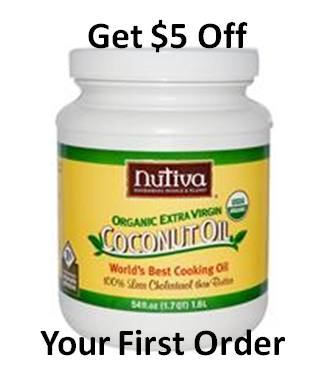5 ways to pick a good coconut oil
Coconut oil is like wine – there are lots of great ones if you know where to look, just as there are some very disappointing ones out there! So make sure you get what you’re paying for.
We all know by now how good coconut oil is, it’s a great way to get more fat in your diet, it’s really stable at high temperatures and it’s really good for cooking in. But if you’ve recently searched for coconut oil, you’d be forgiven for feeling completely overwhelmed and confused at the choices available.

So, what do you need to consider?
Choice One: Refined or Unrefined.
Coconut oil is either refined, or unrefined. A refined oil won’t have that coconut taste or smell, so it can be a good one to have on hand for cooking more delicate dishes, that you don’t want to take on that distinct coconut flavour. Refined coconut oils will still have a great fatty acid profile (and full of those great MCT’s). If the label doesn’t specify, assume it’s a refined oil. Of course to refine the oil is to process it. So if you can, stick with an unrefined oil – but this is great to have on hand for a particular recipe that demands it, or if you’re cooking for someone who can’t stand the taste of coconut.
Unrefined oil is a staple in my house. It does have the distinct coconut flavour, however, between brands there is a huge variation. Some taste way milder than others, so it’s best to try a few until you work out which is your favourite.
Choice Two: Virgin or Extra Virgin.
You’ll likely only see these labels on unrefined coconut oil and unfortunately there seems to be a lot of ambiguity about what they actually mean. As a base assumption, virgin and extra virgin should be a lot purer, and from the first pressing of the coconut.
Choice Three: Expeller-Pressed, Cold-Pressed and Centrifuged
Your next option is how the oil was extracted from the coconut. The less heat used in the process, the more raw the final product – the milder the flavour will be. If the extraction process did heat the oil, it’s not too much of a concern as coconut oil is so stable at high temperatures.
Choice Four: Bulk, Jar or Spray
Your next choice is how you buy the oil. If you use a lot of it, you’ll do far better buying in bulk, instead of individual jars. And as I’ve written about before – I strongly suggest you avoid buying a spray can of coconut oil!
Choice Five: Where to buy
I find it so expensive to buy coconut oil local unfortunately – it’s also hard to find it in bulk quantities. I buy mine from iherb, who ship internationally (get $5 off using code DUV741). It works out far cheaper and they’re got such a big range you can experiment with a few, to work out which you prefer.
And if you do buy a bad one? Don’t throw it away – there are loads of non-edible uses for it!





















